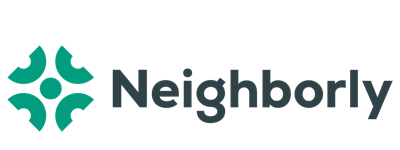Recruiting teams are facing a host of challenges in 2023, from economic turbulence upending hiring plans to budget cuts.
An influx of tech talent has hit the market due to layoffs, yet it’s not necessarily getting easier to find the right talent. Competition for skilled and specialized technical talent remains fierce — and the tech talent shortage is only projected to become more dire as time goes on.
When it comes to winning the talent war, recruiters have two main strategies in their arsenal: inbound and outbound recruiting. We’ll break down the difference between inbound recruiting and outbound recruiting, explain when each approach is most effective, and share expert advice on making your efforts go further as recruiting teams are asked to do more with less this year.
Inbound and outbound recruiting: a comparison
What’s the difference between inbound and outbound recruiting?
Inbound recruiting is about attracting candidates through strong employer brand, social media posting, and engaging job ads. The inbound recruiting strategy is to make potential candidates want to join the company and apply for jobs proactively. Inbound recruiting methods are typically effective for roles that are relatively easy to fill, such as more junior positions or those that attract a lot of qualified applicants.
Outbound recruiting is when recruiters actively seek out potential candidates and convince them to consider your role. Outbound recruiting is typically conducted on career platforms or social media, or through email. Companies rely on outbound recruiting for roles that are hard to fill, such as senior roles, or those requiring specialized and in-demand tech skills. For these roles, inbound recruiting strategies are typically insufficient to generate a strong pipeline of prospective candidates.
Let’s compare a few of the major differences, advantages, and disadvantages of inbound and outbound recruiting strategies.
| Inbound recruiting | Outbound recruiting | |
| Strategy | Passive — building the brand and waiting for candidates to apply | Active — recruiters find and engage with candidates |
| Type of role | Junior, easy-to-fill roles only | Senior or specialized tech roles |
| Candidate quality | Mixed — recruiters have no control over who applies and the talent pool has many unqualified candidates | High — recruiters have control over the talent pool and contact only ideal candidates |
| Time-to-fill | Slow — without a guarantee the right candidate will apply | Fast — for critical roles that need to be filled immediately |
| Investment of effort and cost | Lower — but for a longer period of time | Higher — but for a shorter period of time |
| Candidate engagement | Active — candidates have affirmatively expressed interest | Passive — candidates require a bit more courting |
Why do companies need to have outbound recruiting strategies?
It’s no secret that high-caliber talent for in-demand roles such as Software Engineer are already mostly employed, with an unemployment rate hovering around 1-2%.
Though more tech talent has entered the market this year, the rebalancing has been fairly modest. And finding the right fit amid the noise is still a major challenge, particularly for a job opening requiring specialized skills and experience.
The upshot is that a purely inbound recruiting strategy is insufficient for most tech companies. Waiting around for high-quality, experienced tech talent to come to you isn’t likely to work — even in a downturn. Companies need strong outbound recruiting strategies to boost candidate quality and fill competitive roles with the right person ASAP.
Where to find candidates with outbound recruitment?
Here are the best places for recruiters to find qualified candidates through an outbound recruiting strategy.
Social networking sites
We assume that most outbound recruiters are already familiar with Linkedin, one of the most popular and useful sites for both inbound recruiting and outbound recruiting. Some other great sites for outbound recruiting include:
- Career sites: Indeed, Glassdoor, Wellfound
- Social and career communities: Slack, Discord, and Reddit
- Social networking: Twitter, Facebook, Youtube
You can use a passive candidate email template to connect with talent more effectively through outbound recruitment.
Professional conferences and hackathons
You might consider establishing a relationship with motivated and cutting-edge tech professionals by participating in online tech conferences (or encouraging your engineering leaders to do so).
Creating a booth at in-person or virtual technology conferences to pitch your business to curious potential candidates is another option for outbound recruiting — don’t forget to bring along current employees to connect with other techies and show off your company culture.
As an added advantage, attending these events can also help keep you up-to-date on the latest tech so you can have more productive and meaningful conversations with the technical talent you’d like to hire.
Tech forums and communities
By conducting outbound recruiting on tech-focused sites like Github and Stack Overflow, you can refresh your candidate pool and locate exceptional engineers who might not market themselves on professional networks.
Just remember, these are platform for dialogue and organic connection. Engage in meaningful conversations, be a part of the discourse, and steer clear from the impulse to send generic mass messages. This approach may require more time, but it significantly boosts your chances of success.
AI outbound recruiting
If you’re looking to recruit more efficiently, AI sourcing tools such as Celential.ai can help. Celential’s AI system aggregates data across a variety of social networks, technical communities, and personal projects to gain a deep understanding of candidate backgrounds and job requirements. It then reveals hidden job requirements and inferred skill proficiencies for candidates, with 15 M+ talent graph covering the U.S, Canada, Latin America, and India.
To find out how to receive 10-100+ high-quality candidates ready for interviews for your tech roles within the first month, you can book a demo or sign up for a free trial.
8 key outbound hiring strategies
Encouragingly, Stack Overflow found that almost three-quarters of developers are receptive to a new job, even if they already have one. With the right outbound recruiting techniques, recruiting teams can find highly qualified candidates and persuade them to consider a new opportunity.
#1: Leverage Boolean search for outbound recruitment
If you’re looking to source candidates faster and more effectively, one of our favorite techniques is Boolean Search. You can use it to sift through job boards and sites like GitHub and Stack Overflow to locate only the talent pool you’re looking for.
With this powerful tool, you can find qualified profiles, resumes, cover letters, contact information, and more.
If you’re uncertain about the technical details of a role, you can also use a Boolean Search Strings Cheat Sheet to help out.
#2: Personalization is key to outbound recruiting
Outbound hiring isn’t novel to your candidates. They are familiar with recruiters emailing them about a job opening… and doing it badly. They’re tired of generic messages, clearly sent in bulk and with little personalization. Much like in online dating, you can stand out from the crowd by paying attention and showing genuine interest.
Here are the key ingredients of a personalized message:
Point out top qualifications
Start your email by highlighting their specific qualifications relevant to your job opening.
Example: “I’m impressed with your expertise in Python, AWS, and Kubernetes, not to mention your strong startup background and fintech expertise.”
Acknowledge timing
Mention why you think that now might be good timing for them to move on from their current role.
Example: “I noticed you’re finishing up your third year at Company, and thought you might be looking for a fresh new opportunity.”
Highlight educational and career commonalities
Discuss any shared background with the team they would potentially be joining.
Example: “We have several University of Michigan alums on our team — go blue!”
Pitch the opportunity
Explain what this team/role would be offering to them, as well as how you see them adding value to the company.
Example: By joining us as a Senior Software Engineer, you’d join a founding team on a great trajectory and have the opportunity to own exciting new features from the ground up.
#3: Always follow up
One great way to multiply your outbound recruiting efforts is to send follow-up emails to your initial outreach.
According to our own data, about two-thirds of our candidate replies come from follow-up emails. It’s amazing how many more interested replies you can get just by following up!
Highly effective follow up tips:
- We find that spacing emails 2-4 days apart is optimal to strike the balance of seeming interested but not overly aggressive.
- Consider adding new information to your follow-up, such as a pitch point or a link to a job description.
- In the interest of not alienating candidates whom you may want to contact in the future, limiting follow-ups to 2-3 is a good rule to stick to.
#4: Be warm and responsive
Passive candidates do require more attention than active candidates. In-demand tech talent loses interest very quickly — replying promptly will help you to stay top-of-mind.
In addition, some subtle language framing can make all the difference. When you are requesting something from a candidate, it’s helpful to give a reason why it will benefit them.
For example, if you need to see their resume, don’t say, “Can you send me a resume so I can make sure your background is a fit for this role?”
Instead, you might say, “Do you happen to have a resume to share? That way, we can set up a more meaningful and productive first conversation with you.”
#5: Listen more than you talk
People love to talk about themselves, according to neuroscientific studies from Harvard. By asking some thoughtful questions and paying close attention to the answers, you can lay the foundation for great candidate experience.
According to Eric Guidice, you don’t conduct outbound hiring with a standardized pitch about how fantastic your open role is.
Instead, you find out what they want and why they took your call — the exact key info to flip them from passively considering to actively interested.
#6: Optimize your interview process and hiring strategy
Because they already have a well-paying job, top passive talent will tend to drop out of any process that is bloated or burdensome. Here are some tips for streamlining your interview process:
- Ensure any task that requires effort on the candidate’s part has a defined and specific focus (i.e. testing X skill used extensively on the job).
- Set candidates up for success by trying out assessments on your team and explaining what to expect in advance.
- Create touchpoints by following up rapidly and thoughtfully and making members of your team available to answer questions.
- Prepare an interview schedule before their first call to avoid conflicts with hiring managers or engineering leaders who conduct the assessments.
#7: Build employer brand to attract candidates
How do you build your public image as trustworthy, fun, fair, flexible, and innovative? Here are a few tips.
Firstly, ensure that resources showcasing your culture are readily available to candidates. Use social media platforms, blogs, newsletters, and videos to highlight team-building activities, employee achievements, and DEI initiatives. If you showcase an engaging company culture in your outbound recruiting, candidates will find it much easier to envision themselves on your team.
Consider asking your employees for honest Glassdoor reviews. Your organization’s rating and reviews can significantly influence candidates’ decision to join your team. Encourage current employees to leave feedback about their experiences to promote trustworthiness and continually uplevel your culture.
Offering unique perks and benefits can also help your organization stand out. This could be anything from flexible working hours and wellness programs, to free yoga classes, tuition assistance, or unlimited PTO.
#8: AI sourcing tools for outbound recruiting
If your recruiting team is looking to increase your outbound recruiting ROI with the latest tech, AI sourcing tools can help. Using AI and ML models custom-built for tech recruiting, Celential provides skilled tech candidates for your roles — freeing you up to close more hires with fewer resources.
We offer:
- Warm, qualified talent ready for interviews appearing in your inbox or ATS
- Coverage of specialized engineering, product, and sales talent: including ML Engineer, Data Scientist, Fullstack Developer, Back End Developer, Front End Developer, DevOps Engineers, Tech Leads, Architects, Managers
- Instant flexibility to scale up and down your outbound recruitment efforts as your hiring needs, role priorities, and budget shift during these uncertain economic times.
Start leveraging automated, hyper-personalized engagement at scale today!

Table of Contents

































Submit a Comment